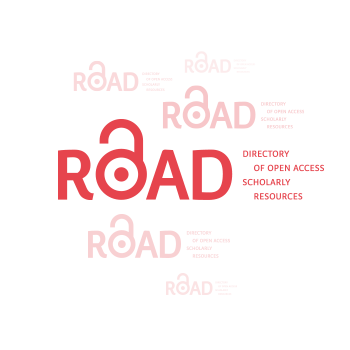The Libyan Language in The Maghreb During the Ancient Era Between Roots, Development and Continuity
DOI:
https://doi.org/10.59994/pau.2024.2.1Keywords:
Libyan language, Afrasi, The ancient Maghreb, Libyan DialectsAbstract
This research paper talks about the Libyan language, which before it took on the name “Amazigh” today, was known as Libyan during the ancient period, in reference to the entire Maghreb region that Herodotus called Libya and the inhabitants Libyans. Our study of the Libyan language aims to introduce it, and form an idea about its roots, the development it has witnessed since its emergence, and its continuity to the present time. This is done by addressing its definition and knowing its place within the tree of linguistic families, as an Afrasi (Hamitic-Semitic) language, then the space it occupied on the tongue of speakers of the ancient era in the Maghreb, as well as the multiplicity of its linguistic vocabulary, whether at the level of proper names or places, which created Libyan dialects that remain in use throughout the Maghreb countries from ancient times to the Middle Ages and the present period. To prove its existence as a linguistic, cultural and civilizational component for the inhabitants of the Maghreb region, there is no evidence of its existence other than its translation into alphabetical letters and its continued pronunciation to this day, along with all the languages that came to the region. This is what requires us today to preserve it as a cultural heritage and a cultural component of the entire Maghreb region.
Downloads
References
المراجع العربية:
أسمهر، المحفوظ؛ علاش، صباح، بنطالب، علي. (2008). بعض مظاهر التنوع الثقافي واللغوي بالمغرب عبر التاريخ، مجلة أسيناك، العدد 1، 15-30.
أعشي، مصطفى. (2002). جذور بعض مظاهر الحضارة الأمازيغية خلال عصور ما قبل التاريخ. الرباط، مركز طارق بن زياد.
البركاني، عبد الحنين. (1995). من اللهجة الريفية نحو البحث عن فصحى أمازيغية. مجلة تاريخ المغرب، العدد6، 103-108.
حارش، محمد. (1992). التاريخ المغاربي القديم السياسي والحضاري منذ فجر التاريخ إلى الفتح الإسلامي. الجزائر، المؤسسة الجزائرية للطباعة.
الركيك، عبد اللطيف. (2008). بعض ملامح التفاعل بين اللغتين الليبية والبونية خلال الفترة القرطاجية. أسيناك، العدد 1، 31-48.
أبو السعود، صلاح. (2011). تاريخ وحضارة الفينيقيين. مصر، مكتبة النافذة.
شنيتي، محمد. (2003). لمحة عن التفاعل الثقافي في الجزائر القديمة. أضواء على تاريخ الجزائر القديم (بحوث ودراسات)، 155-165.
عقون، محمد. (2008). الاقتصاد والمجتمع في الشمال الأفريقي القديم. الجزائر، ديوان المطبوعات الجامعية.
عيساوي، مها. (2009). النقوش النوميدية في بلاد المغرب القديم. الجزائر، جسور للنشر والتوزيع.
المراجع العربية بنظام الرومنة:
Asmhr, Almhfwz؛ 'Elash, Sbah, Bntalb, 'Ely. (2008). b'ed mzahr altnw'e althqafy wallghwy balmghrb 'ebr altarykh, mjlh asynak, al'edd 1, 15-30.
A'eshy, Mstfa. (2002). jdwr b'ed mzahr alhdarh alamazyghyh khlal 'eswr ma qbl altarykh. alrbat, mrkz tarq bn zyad.
Albrkany, 'Ebd Alhnyn. (1995). mn allhjh alryfyh nhw albhth 'en fsha amazyghyh. mjlh tarykh almghrb, al'edd6, 103-108.
Harsh, Mhmd. (1992). altarykh almgharby alqdym alsyasy walhdary mnd fjr altarykh ela alfth aleslamy. aljza'er, alm'essh aljza'eryh lltba'eh.
Alrkyk, 'Ebd Alltyf. (2008). b'ed mlamh altfa'el byn allghtyn allybyh walbwnyh khlal alftrh alqrtajyh. asynak, al'edd 1, 31-48.
Abw Als'ewd, Slah. (2011). tarykh whdarh alfynyqyyn. msr, mktbh alnafdh.
Shnyty, Mhmd. (2003). lmhh 'en altfa'el althqafy fy aljza'er alqdymh. adwa' 'ela tarykh aljza'er alqdym (bhwth wdrasat), 155-165.
'Eqwn, Mhmd. (2008). alaqtsad walmjtm'e fy alshmal alafryqy alqdym. aljza'er, dywan almtbw'eat aljam'eyh.
'Eysawy, Mha. (2009). alnqwsh alnwmydyh fy blad almghrb alqdym. aljza'er, jswr llnshr waltwzy'e.
المراجع الفرنسية:
Barbier de Meynard, C. (1886). Rapport sur une nouvelle mission accomplie par M. Basset en Algérie, à la recherche des dialectes berbères. Comptes rendus des séances de l'Académie des Inscriptions et Belles-Lettres (C. R. A. I), 30 (2), 260-262.
Basset, H. (1920). Essai sur la littérature des Berbères ancienne. Maison Bastide-Jourdan Jules Carbonel imprimeur libraire-Editeur.
Bernard, A. (1937). Afrique septentrionale et occidentale. T. XI. libraire Armand Colin.
Camps, G. (2007). Les Berbères mémoire et identité. éd. Barzakh. l’Algérie.
Chaker, S. (1977). Quelques considérations générales sur la langue des Touaregs. Libyca Alger, 25, 205-217.
Colin, F. (1999). Le ‘vieux libyque’dans les sources égyptiennes (du Nouvel Empire à l’époque romaine) et l’histoire des peuples libycophones dans le nord de l’Afrique. Bulletin archéologique du Comité des Travaux Historiques et Scientifiques, 25, 13-18.
Corippus. F. C (1900). Johannide, chant II. Revue tunisienne. Comité de l’institut de Carthage.Tunis.
Destaing, E. (2001). Essai de classification des dialectes berbères de Maroc. Études et documents berbères, 19(1), 85-101.
Février, J. (1959). Histoire de l’écriture. éd. Payot. Paris.
Gsell, S. (1913). Histoire ancienne de l’Afrique du Nord .(T.I). éd. Libraire Hachette.
Gsell, S. (1927). Histoire ancienne de l’Afrique du Nord. T. VI. éd. Libraire Hachette.
Hachid, M. (2000). Les premiers berbères: entre Méditerranée, Tassili et Nil. FeniXX.
Onrubia-Pintado, J. (2000). les premiers berbérophones.Histoire de Amazighs, Conférence International sur l’Histoire de Amazighs, Tome. 1, 42-55.
Pline L’Ancien . (1850). Histoire naturelle. V. édition d’Emil Littré.
Salama, P. (1989). le Sahara pendant l’antiquité classique. Histoire générale de l’Afrique, (T. II), 555-576.
Sallustius C.(1933). Guerre de Jugurtha. traduction Garnier. éd de François Richard.
Silius Italicus. C.A. (1878). Guerres puniques. II. traduction française de M. Nisard, chez Firmin-Didot et Cie. Libraire Imprimeurs de l’institut de France.
Toutain, J. (1896). Les cités romaines de la Tusisie: essai sur l'histoire de la colonisation romaine dans l'Afrique du nord. A. Fontemoing.
Downloads
Published
How to Cite
Issue
Section
License
Copyright (c) 2024 Journal of Palestine Ahliya University for Research and Studies

This work is licensed under a Creative Commons Attribution 4.0 International License.
مجلة جامعة فلسطين الاهلية للبحوث والدراسات تعتمد رخصة نَسب المُصنَّف 4.0 دولي (CC BY 4.0)











